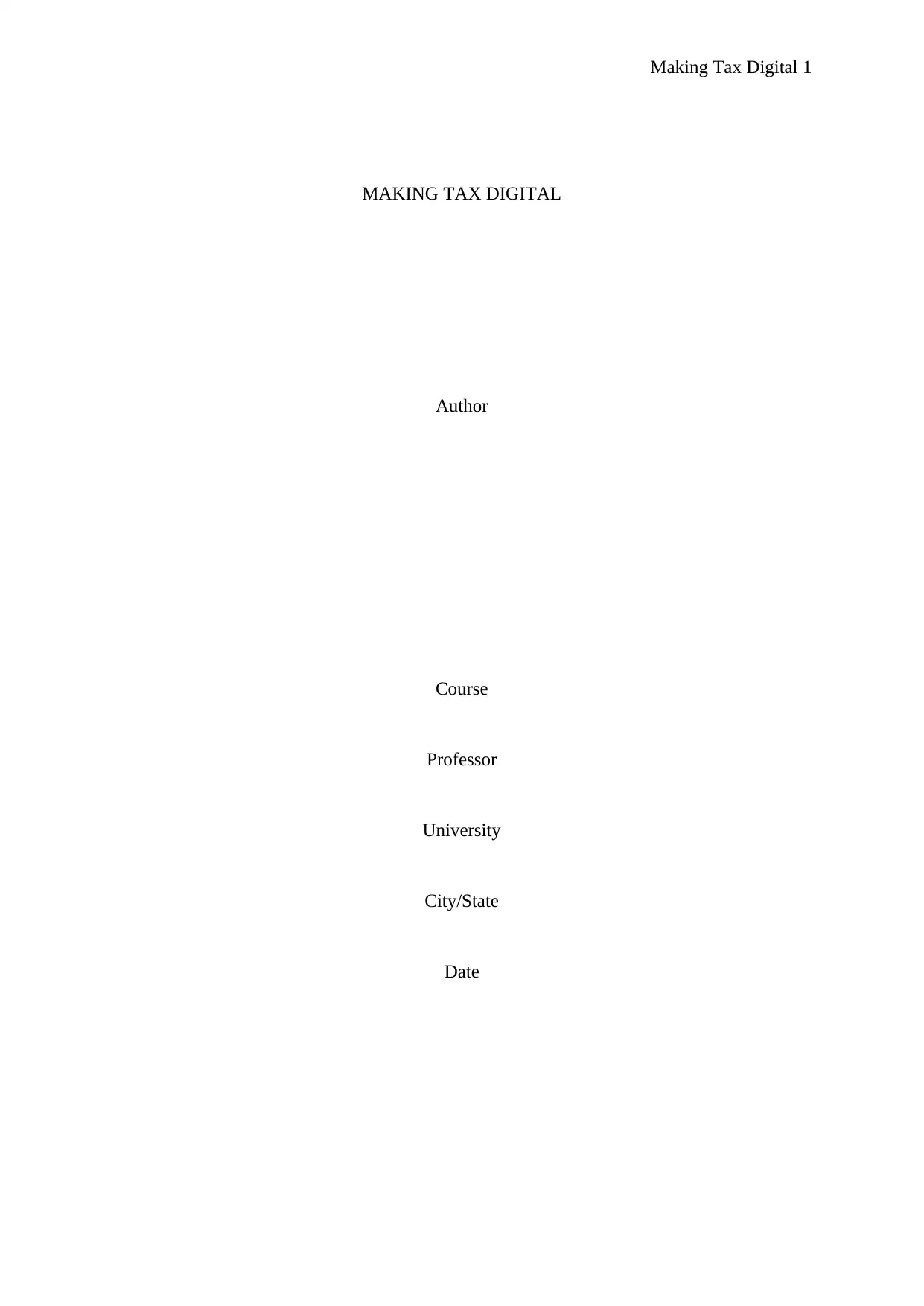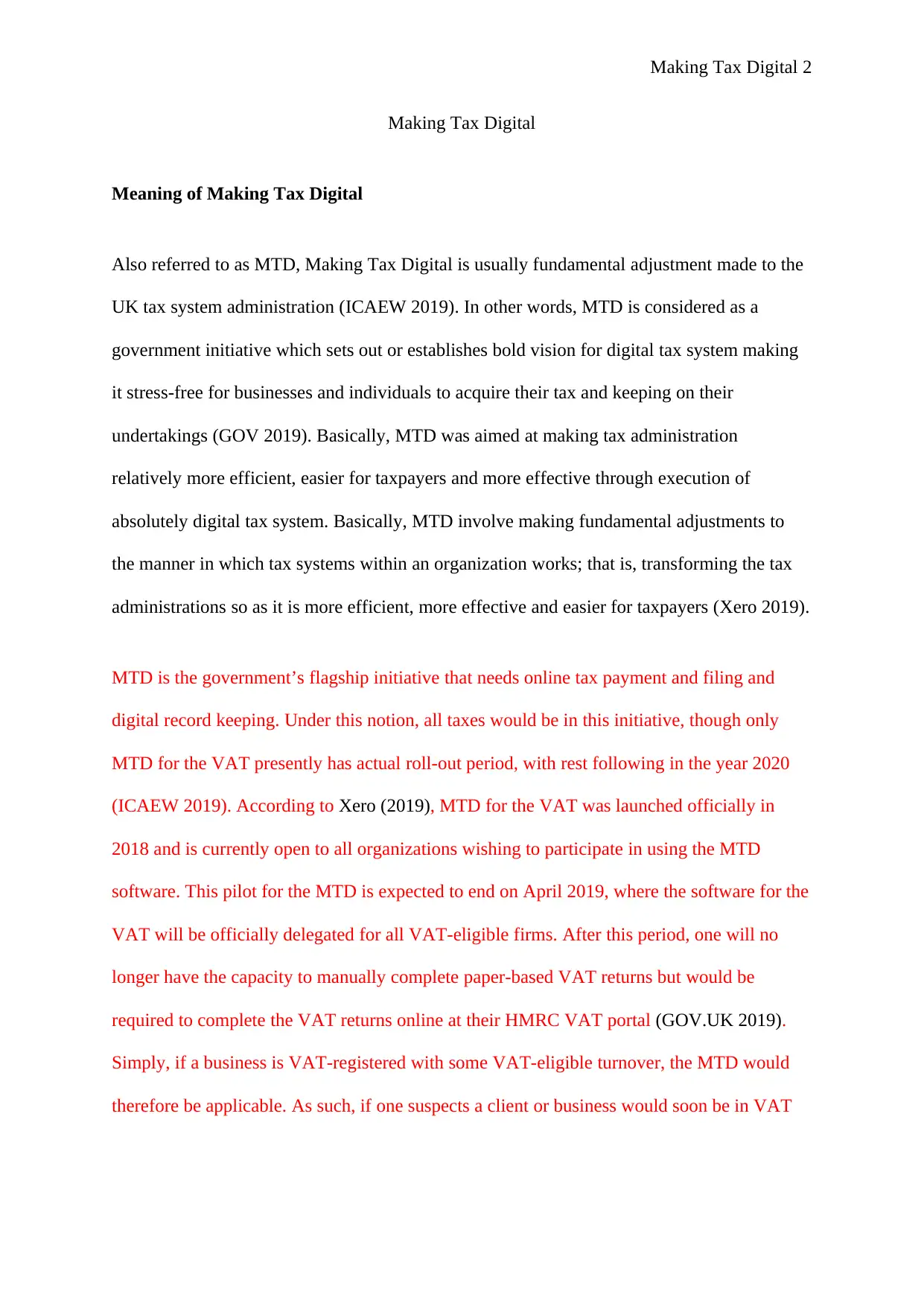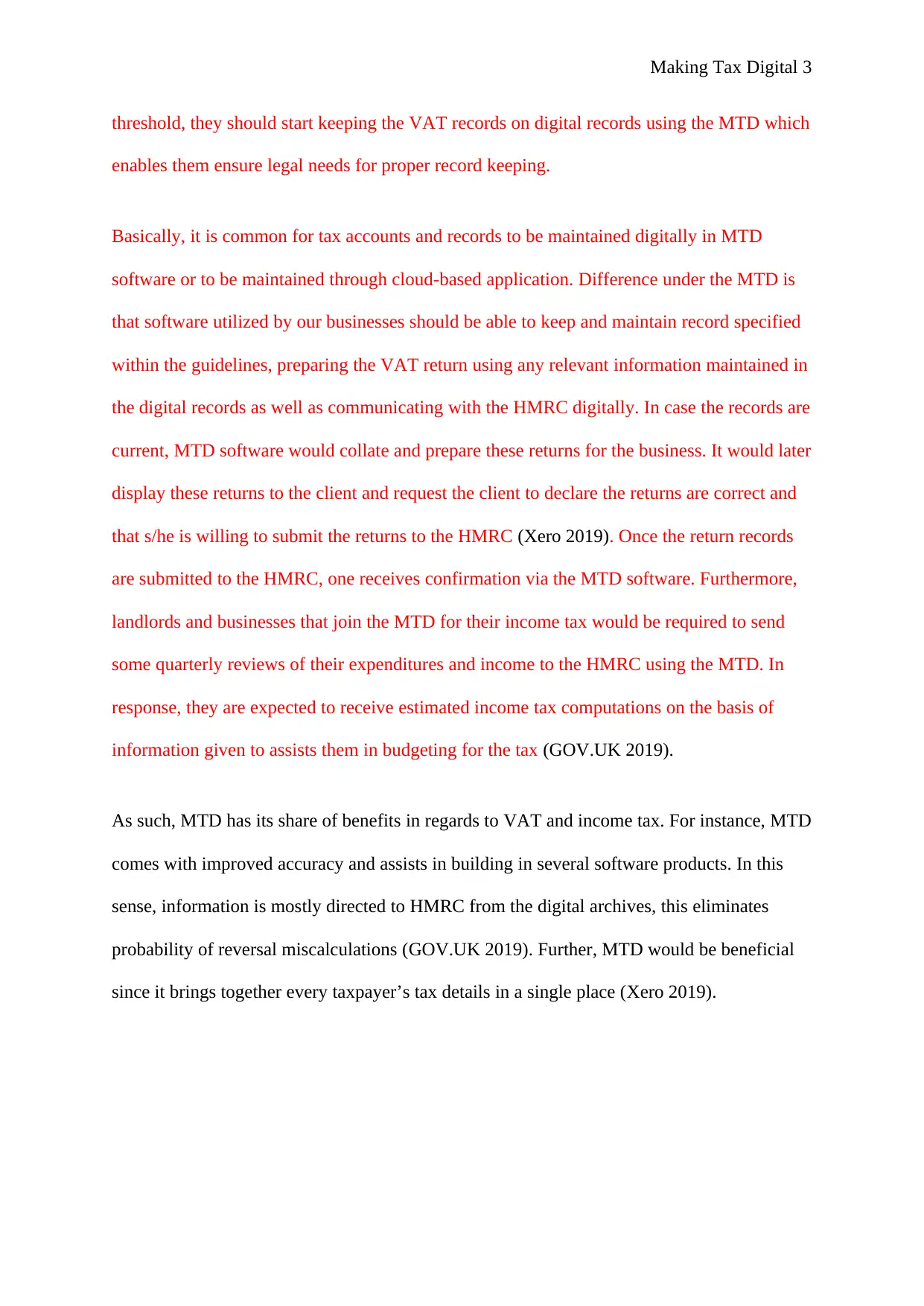Making Tax Digital: Definition, Benefits, and Implementation
VerifiedAdded on 2023/04/21
|4
|744
|406
Report
AI Summary
This report provides an overview of Making Tax Digital (MTD), a significant adjustment to the UK tax system. It explains MTD as a government initiative aimed at making tax administration more efficient and easier for businesses and individuals through a digital tax system. The report details the implementation of MTD, focusing on its requirements for online tax payment, filing, and digital record-keeping, particularly for VAT. It highlights the benefits of MTD, such as improved accuracy and the consolidation of taxpayer details in a single place. The report also references key resources like GOV.UK, ICAEW, and Xero to provide a comprehensive understanding of MTD's definition, application, and impact on businesses. The report clarifies the process of submitting VAT returns online and the importance of maintaining digital records using MTD-compliant software. It also touches upon the implications for income tax, including quarterly updates and estimated tax computations.
1 out of 4






![[object Object]](/_next/static/media/star-bottom.7253800d.svg)